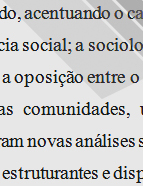

................................
Somewhat unusual was the reappearance (1804) of the book by Friar Nicolau de Oliveira (1566-1634), which would serve as a source for many later works. The author was in Morocco during the liberation of captives and published (1620) the Livro das Grandezas de Lisboa (Book of the Greatness of Lisbon), composed by Father Frey Nicolao d’Oliveira , a member of the Order of the Holy Trinity, and a native of the same city, addressed to D. Pedro d’Alcáçova , alcayde mor of the three towns, Campomayor , Ongvella , and Idanha a Nova, and commander of the Idanhas , with a summary of the organic-functional network of the Central Administration of the Crown: Senate of the Chamber, courts, Customs Court, Table of Conscience and Orders, Finance Council, Council of State, Court of the Holy Office, Court of the Legation, Court of Appeal, Court of the King and the Crown, and Court Chancellery, in addition to listing offices and describing procedural matters.
Around the same time, Joaquim de Santa Rosa de Viterbo (1744-1822), a Franciscan, member of the ARCL and apostolic notary (1791), visited many archives and libraries and compiled the Elucidario das palavras , terms and phrases that were formerly used in Portugal and are now regularly ignored: an indispensable work for understanding without error the rarest and most precious documents preserved among us. Published for the benefit of Portuguese literature and dedicated to His Royal Highness.
But the practice of the diplomatic and palaeographic method was marked by João Pedro Ribeiro (1758-1839) with his Dissertações Chronológicas e Críticas sobre a História e Jurisprudência Ecclesiástica e Civil (Chronological and Critical Dissertations on Ecclesiastical and Civil History and Jurisprudence) (1810- 1836) and by the study of legislation and models of governance by José Anastácio de Figueiredo (1766/1805), Synopsis Chronológica de Subsidios , ainda os maiores , para a Historia e estudo critico da Legislação Portugueza (1790) and Memória sobre a origem dos nossos Juízes de Fora (1792).
This work is financed by national funds through FCT - Foundation for Science and Technology, I.P, in the scope of the projects UIDB/04311/2020 and UIDP/04311/2020.
